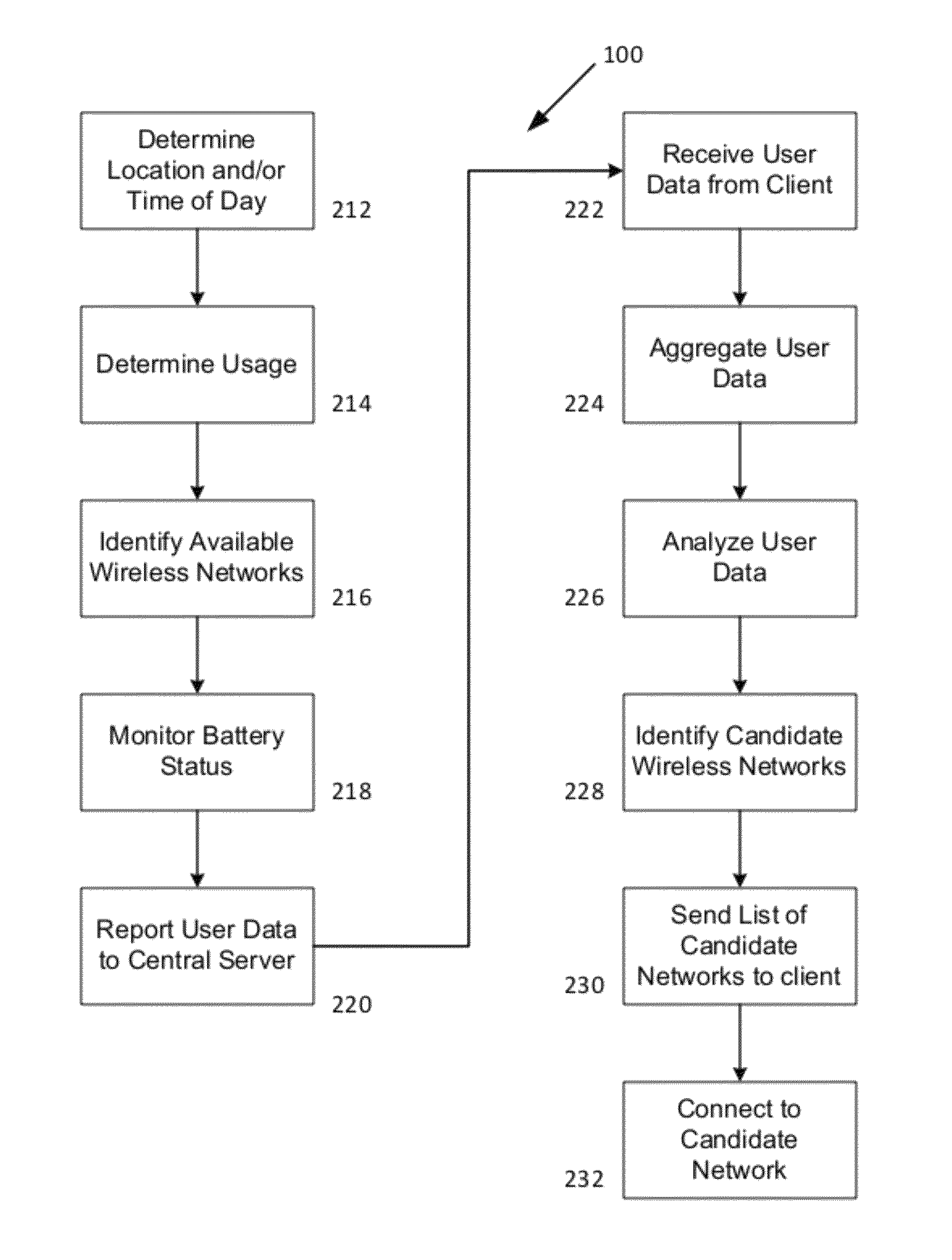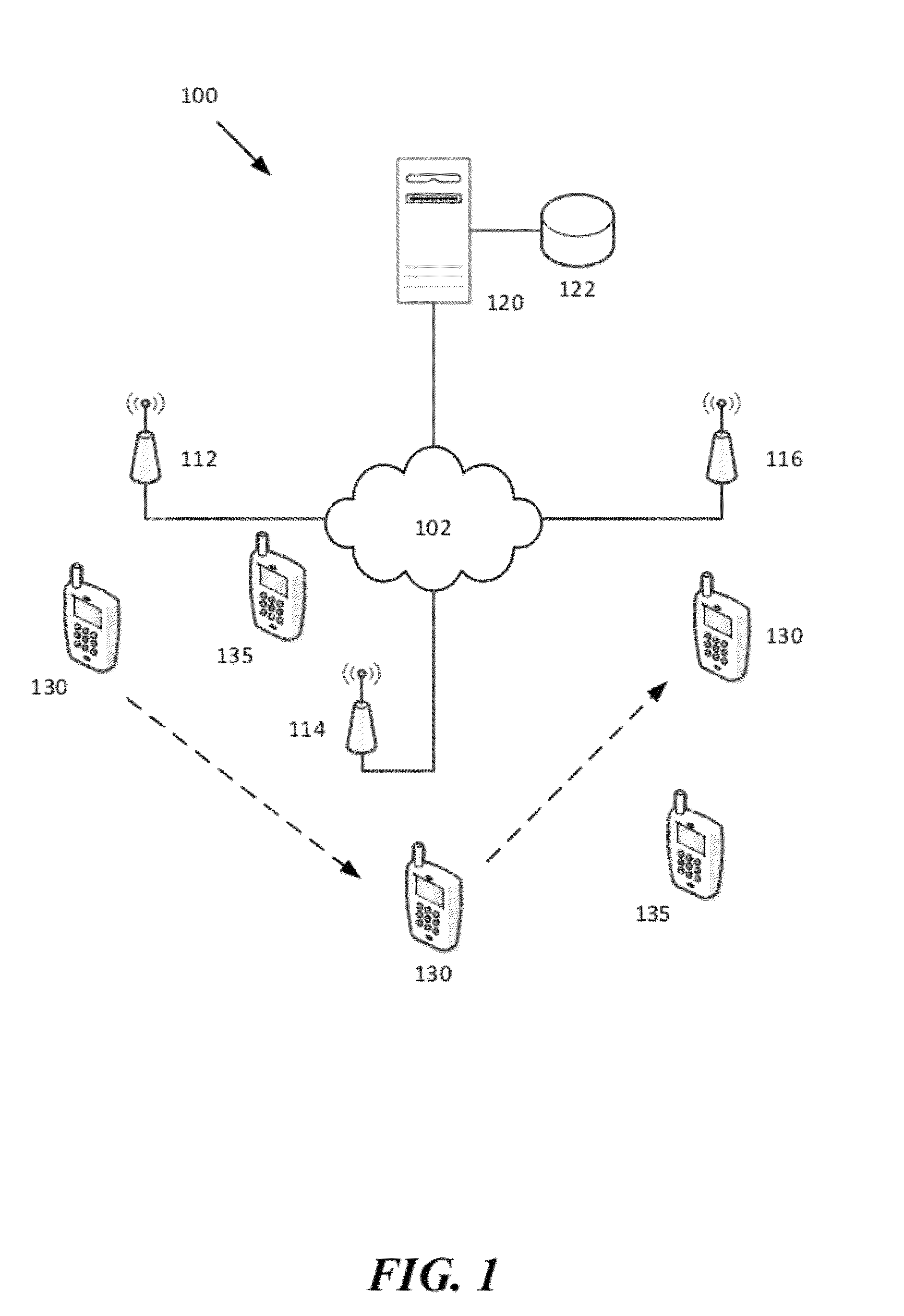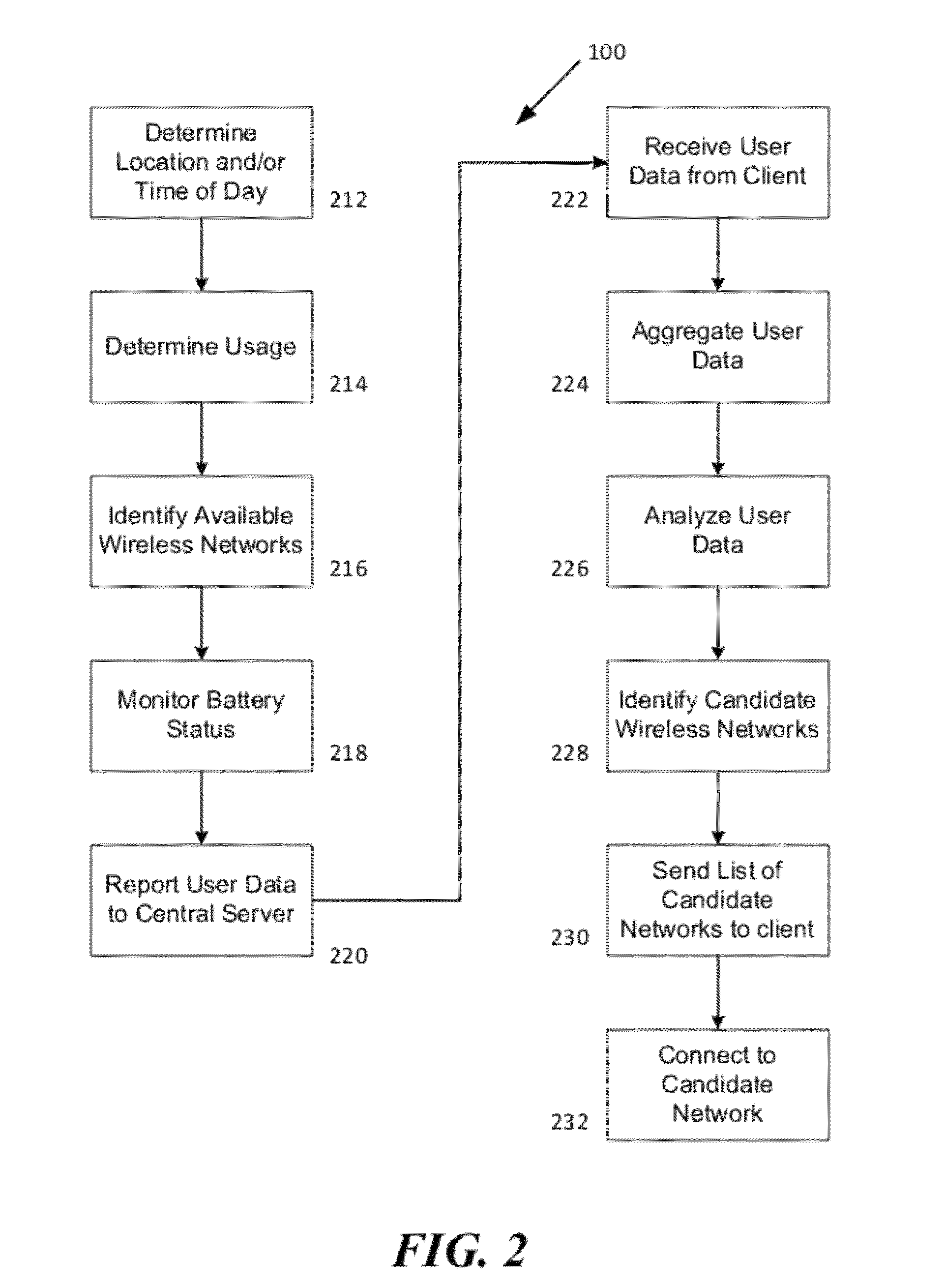Method and system for selecting a wireless network
a wireless network and wireless technology, applied in the field of wireless user terminal methods and systems, can solve the problems of limited wlan transmission power, few unique challenges in mobile networks, and increased data usage, and achieve the effect of better wireless connection and better wireless connection
- Summary
- Abstract
- Description
- Claims
- Application Information
AI Technical Summary
Benefits of technology
Problems solved by technology
Method used
Image
Examples
Embodiment Construction
[0021]Wireless user terminals, for example, for example smart phones, are generally configured to automatically connect to the user's primary wireless network (e.g., the cellular carrier network) which serves as the primary wireless network for voice and data services. In many situations, other wireless networks (e.g., WiFi, WiMAX), sometimes with higher bandwidth and user capacity are available to the wireless network user. The present invention is directed to methods and systems for identifying these alternative wireless networks and assisting or encouraging users to access or switch to those wireless networks. This can benefit the wireless user because the user can obtain access to a faster and potentially more reliable wireless network. This can also benefit the user's wireless carrier because the carrier can offload voice and / or data network traffic on to another network.
[0022]The present invention leverages the likelihood that many wireless users spend a significant portion of...
PUM
 Login to View More
Login to View More Abstract
Description
Claims
Application Information
 Login to View More
Login to View More - R&D
- Intellectual Property
- Life Sciences
- Materials
- Tech Scout
- Unparalleled Data Quality
- Higher Quality Content
- 60% Fewer Hallucinations
Browse by: Latest US Patents, China's latest patents, Technical Efficacy Thesaurus, Application Domain, Technology Topic, Popular Technical Reports.
© 2025 PatSnap. All rights reserved.Legal|Privacy policy|Modern Slavery Act Transparency Statement|Sitemap|About US| Contact US: help@patsnap.com



